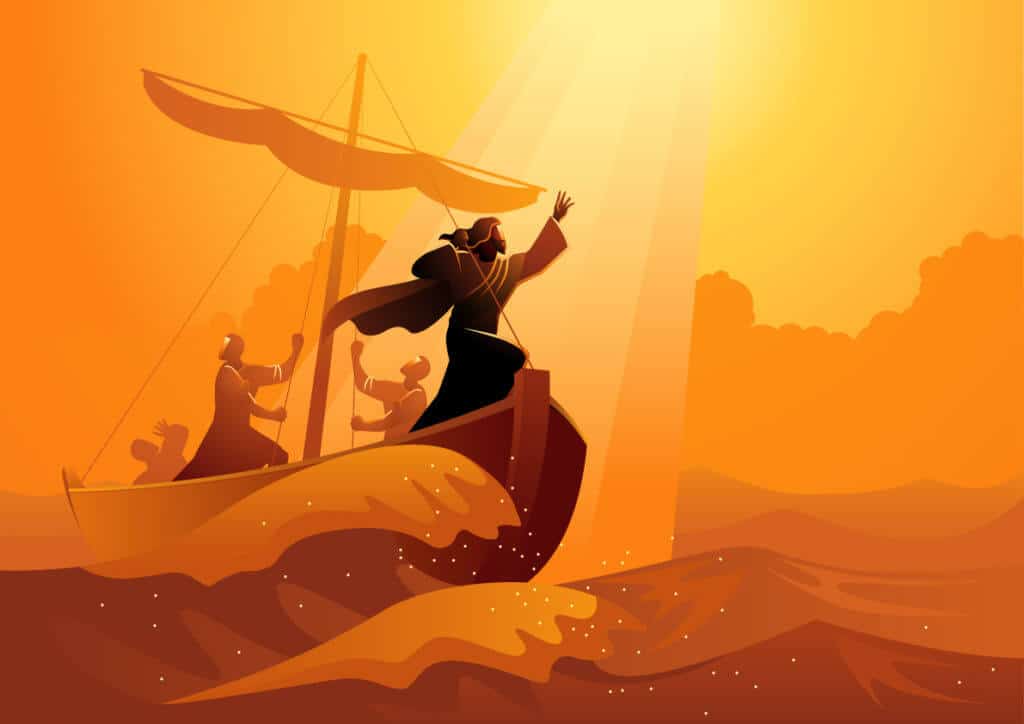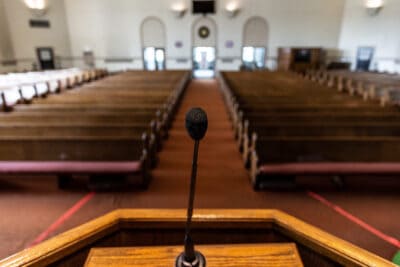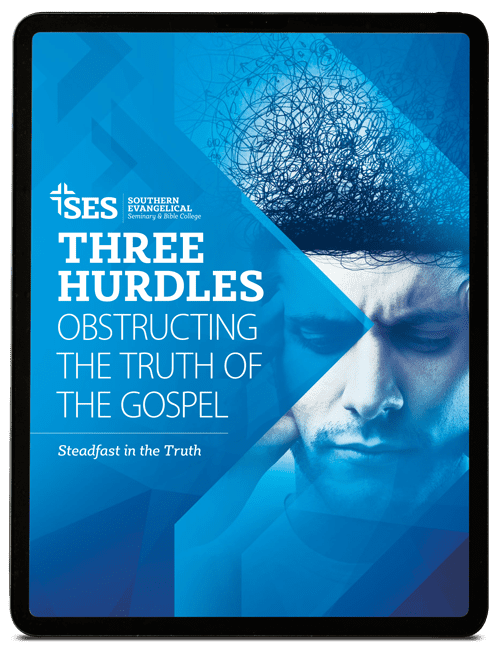At usually over 1,000 pages long (depending on the translation and format), the Bible contains many details that can be confusing to put together. Believers and unbelievers alike are often familiar with major Bible characters and events, such as the stories about Cain and Abel, Moses and Pharaoh, and David and Goliath. However, many people do not realize that all of these famous stories are parts of an overarching biblical plot. Having a good understanding of this plot can give more insight into the smaller stories and help avoid confusion. In this initial post, I want to provide a birds-eye view of the Bible’s plot.
In the Beginning
A good consideration of Genesis is crucial for understanding the main story of the Bible and many of its subplots. Genesis 1-3 contains a miniature version of the plot of the Bible. In Gen. 1-2, God is shown creating the universe and preparing the earth on which humankind will live, represent, and serve Him. God places the first human, Adam, in the Garden of Eden and commands him to spread across and subdue the earth. However, Adam and Eve do not fully obey God, and they instead give in to the suggestions of a serpent. Because of this disobedience, God banishes Adam and Eve from the Garden. They are told that their actions have resulted in several curses on the earth and humanity, but God promises that a descendant of Eve will eventually crush the head of the serpent, although the descendant’s heel will be bruised in the process. As mentioned, this story in Genesis contains the seeds of several subplots that together comprise the main plot of the Bible.
Creation
One major theme found within Genesis, and repeated throughout the Bible, is the theme of creation. This theme repeats at major intervals in the main storyline of the Bible. In Gen. 1-2, God creates the earth and humanity and declares them to be good. However in Gen. 3, Adam and Eve sin by eating the fruit of the Tree of the Knowledge of Good and Evil. Because of this, God pronounces curses on the serpent, humanity, and the earth. Yet God promises that redemption for humanity will come through a descendant of Eve.
The theme of creation (often accompanied with a fall, judgment, and promise of redemption) occurs at least two more times in the Bible. After God floods the earth, He causes the waters to recede and starts over with Noah and his family (creation). God commands them to multiply and spread across the earth, but almost immediately, Noah falls short by getting drunk on wine and getting naked in his tent (fall). Noah’s sin results in further curses, specifically on the descendants of his son Ham. Afterward, humanity is found building a tower in Babel to make a name for themselves and to avoid being scattered across the earth (which was a rejection of God’s command to multiply on the earth). As a result, God confuses the language of humanity and scatters humans across the earth (judgment). Eventually, God promises Abraham that all the nations of the earth will be blessed through Abraham’s descendants (promise of redemption).
This theme is seen a third time when God calls the Jews out of Egypt. In Gen. 35, God renames Jacob to Israel, tells him a great nation will come from him, and commands him to be fruitful and multiply (creation). The Israelites obey God’s command to multiply and enter the land of Canaan, but they fail to completely subdue the land and quickly turn to serving other gods (fall). In fact, before they even enter their promised land, they grumble against God and worship a golden calf. As a result, the Israelites are ultimately removed from the land, and their temple is destroyed (judgment). Throughout this process, God promises David that he will have a descendant who will sit on the throne of Israel forever, and God gives His prophets visions of a restored Israel that will last forever (promise of redemption).
The theme of creation is seen again in the New Testament. Jesus commands His apostles to go and make disciples of all nations (reminiscent of God’s commands to be fruitful and multiply). Afterward, with His Spirit, God creates the Church at Pentecost. With Jesus as its head, the Church never falls, but it continues the struggle that began in Genesis between the followers of the serpent and the followers of the promised descendant of Eve. This struggle is prophesied to end when the earth, humanity, and the serpent will all be judged. At this time, it is said that God will create one last time when He brings down heaven and creates a new heaven and new earth.
Covenant
In addition to creation, another theme that helps shed light on the biblical epic is the theme of God’s covenants. Beginning with Adam and Eve, God makes and reconfirms covenants many times throughout the Bible. As mentioned, God made promises to Adam and Eve and Abraham, but God makes several more covenants than these.
The first covenant is the Edenic Covenant. This began as a conditional arrangement between Adam and God in which Adam was to lead humanity as it spread across the earth with God’s help. However, after the fall, Adam and Eve are cast out of God’s presence and are to spread across the earth under the influence of the curses and in light of the resistance of the serpent and his followers. Yet God makes an unconditional promise that one day a descendant of Eve will crush the serpent’s head.
God also makes a covenant with Noah and commands his family to replenish the earth, but regarding the plot of the Bible, the next important covenant is the Abrahamic Covenant. God makes an unconditional covenant with Abraham and promises him his descendants will make a great nation that will possess the land of Canaan. Eventually, Abraham’s name will be made great, and all nations will be blessed through Abraham’s descendants.
Another important covenant is the Mosaic Covenant. In this conditional covenant, God promises the Israelites blessings in the land of Canaan as long as they serve as a priestly nation that is supposed to demonstrate God’s glory to the nations. If Israel follows God’s commands and worships Him only, Israel will be blessed. If it does not, then it will experience hardship and exile.
God makes another important covenant with King David. After he becomes king, God promises David that he will have one of his descendants on the throne in God’s kingdom forever. David is promised that his name will become great, his line will be established forever, and his line will rule in God’s kingdom forever. This unconditional covenant basically clarifies how portions of God’s promises to Adam and Abraham will be fulfilled.
Finally, God promises through the prophets Ezekiel, Jeremiah, and others that He will eventually bring His people, the Israelites, back into the land He promised them and, through His Spirit, make it possible for them to obey and love Him. This is another covenant that clarifies how God’s promises to Adam and Abraham will be fulfilled specifically.
God’s Presence
The last major theme that helps clarify the plot of the Bible is the theme of God’s presence. Noting God’s special manifestations of His presence on earth throughout the biblical stories often makes sense of events and statements that would otherwise be confusing. As the most important character in the biblical epic, it is crucial to track God and His presence throughout the Bible.
First, God is seen “walking” in the Garden of Eden in Gen. 3. As mentioned, Adam and Eve were cast out of God’s presence after they disobeyed God and sinned by eating fruit from the forbidden tree. As it stands, it seems that humanity, at least Adam and Eve, would have been able to enjoy being in God’s presence as they attempted to carry out His command to spread across and subdue the earth.
While humanity is exiled from God’s presence, God occasionally manifests Himself to the patriarchs including Abraham and Moses. However, it isn’t until God brings Israel out of captivity in Egypt that God’s presence is manifested in a big way again. In particular, God is manifested as a pillar of smoke and fire as He leads the Israelites into the land of Canaan. God’s presence also indwells the tabernacle during and after the wilderness wanderings.
Eventually, Solomon builds a temple for God, and God indwells the temple after it is completed. Yet as Israel spiritually degenerates, God’s presence leaves the temple and Jerusalem. By the time of the intertestamental period, not only does God cease speaking to the Jews, but God’s presence is nowhere to be found in Israel.
When Jesus is born, obviously, God’s presence is back on earth and in Israel. During Jesus’ ministry, He often referred to His body as a temple. This is because the temple had been the special place where God’s presence had been manifested, but now it is in Jesus.
After Jesus’ ascension, the Holy Spirit comes down to form the Church. Now in the Church Age, God indwells believers and is specially manifested on earth by their actions and witness. God indwells believers individually and is also present in a special way when believers gather together.
Finally, after the Church Age, it is said that God will bring heaven down to the earth, and God’s presence will be everywhere in the new heaven and new earth. God will finally dwell among His people on earth again. The entire creation will finally maximally reflect God’s glory as His eternal plan comes to fruition.
Putting It All Together
As can be seen, there is an overarching plot to the Bible that begins in its first chapters. Piecing together the themes of creation, covenant, and God’s presence helps the plot emerge. God has a plan from the very beginning that is played out through the thousands of years of human history.
- Creation of the world
- Edenic Covenant – humanity is commanded to subdue the earth and multiply on it
- Fall – Adam and Eve eat some forbidden fruit and are exiled from the Garden of Eden
- Promise of redemption – a descendant of Eve will crush the head of the serpent and remove the curses
- God’s presence – God dwells with Adam and Eve before they disobey Him
- Creation of the post-flood world
- Noahic and Abrahamic Covenants – humanity is commanded to replenish the earth and multiply on it; Abraham’s name will be made great; he will have many descendants who will possess the land of Canaan
- Fall – humanity builds a tower to prevent spreading across the earth
- Promise of redemption – all nations will be blessed through Abraham’s descendants
- God’s presence – God occasionally appears to the patriarchs
- Creation of the nation Israel
- Mosaic, Davidic, and New Covenants – Israel is to act as a nation of priests; they will be blessed in the land as long as they obey God’s commands and worship God only; David will have a descendant on the throne of Israel forever
- Fall – Israel does not completely remove the inhabitants of Canaan, continually worships other Gods, and disobeys God’s commands
- Promise of redemption – the New Covenant stipulates that God will eventually empower the nation Israel to follow and love Him; this will ensure that Israel blesses the nations as promised
- God’s presence – God dwells among the Israelites in the tabernacle and Solomon’s temple
- Creation of the Church
- Great commission – the Church is commanded to make disciples of all nations
- Promise of redemption – the Church will suffer as they witness to the world, but Jesus will return to destroy the serpent and judge the living and the dead
- God’s presence – God takes on flesh and comes to the earth as Jesus of Nazareth
- Creation of the new heaven and new earth
- Redemption – the serpent and his demons are cast in the lake of fire; Jesus, the promised descendant, reigns over the earth forever; Israel and the nations are reconciled to God
- God’s presence – God’s plan comes to fruition as He finally dwells among His people; the new heaven and new earth is filled with God’s glory and redeemed humanity
In the coming weeks and months, I plan on going into detail on the themes of creation, covenants, and God’s presence. I also want to discuss the theme of the seed conflict, which I didn’t have enough space to mention in this post. By the end, I hope to give readers a detailed picture of the themes that comprise the main plot of the Bible.
For visual learners, here is a companion video regarding the plot of the Bible created by Timothy Mackie and Jonathan Collins of The Bible Project:
Here is another Bible Project video that discusses the importance of recognizing plots in the Bible:

Download Your FREE eBook!
- Reading Books and Listening to Talks is Not Enough
- Not All Apologetics Methods Are Created Equally
- A Degree is More Than a Piece of Paper






